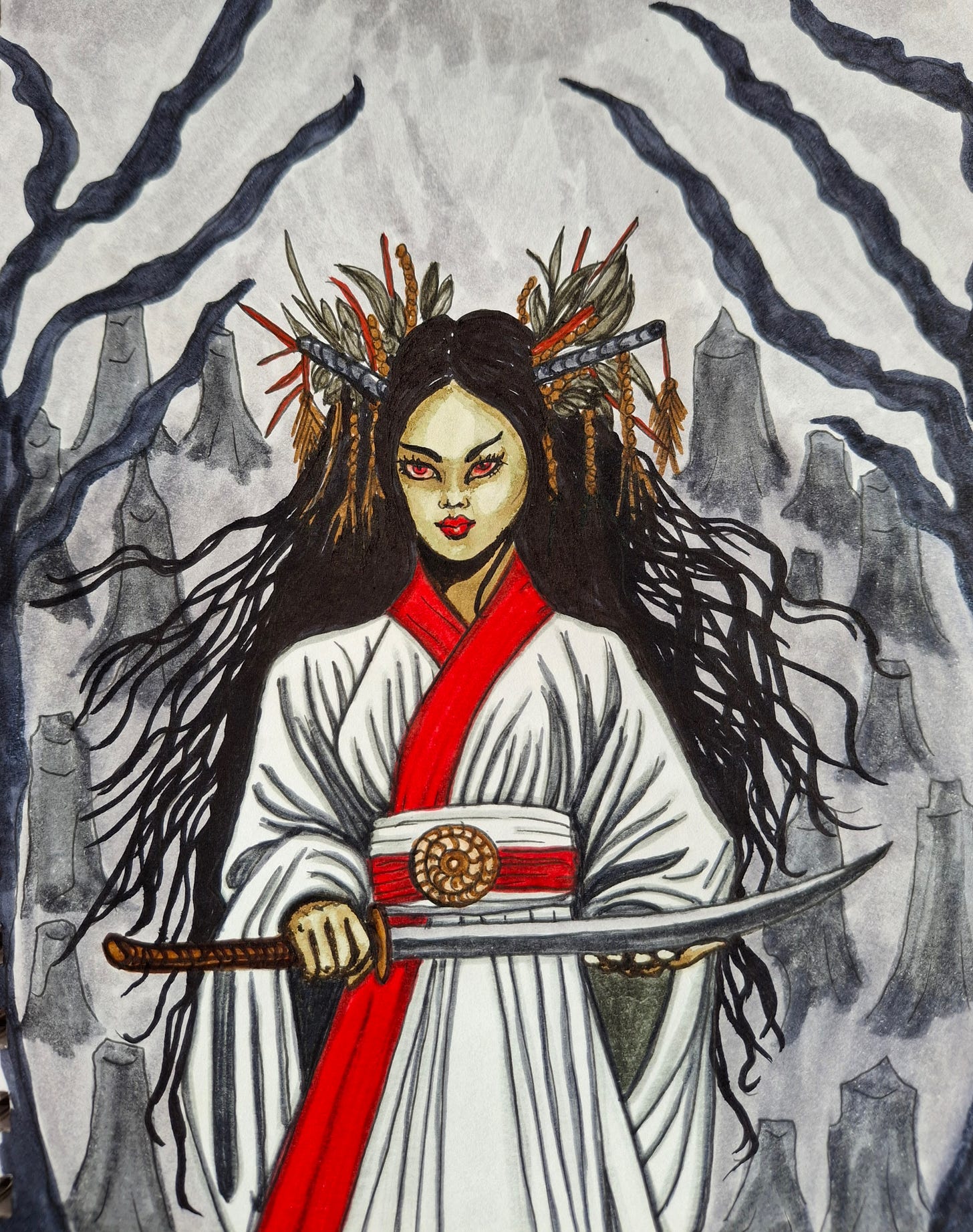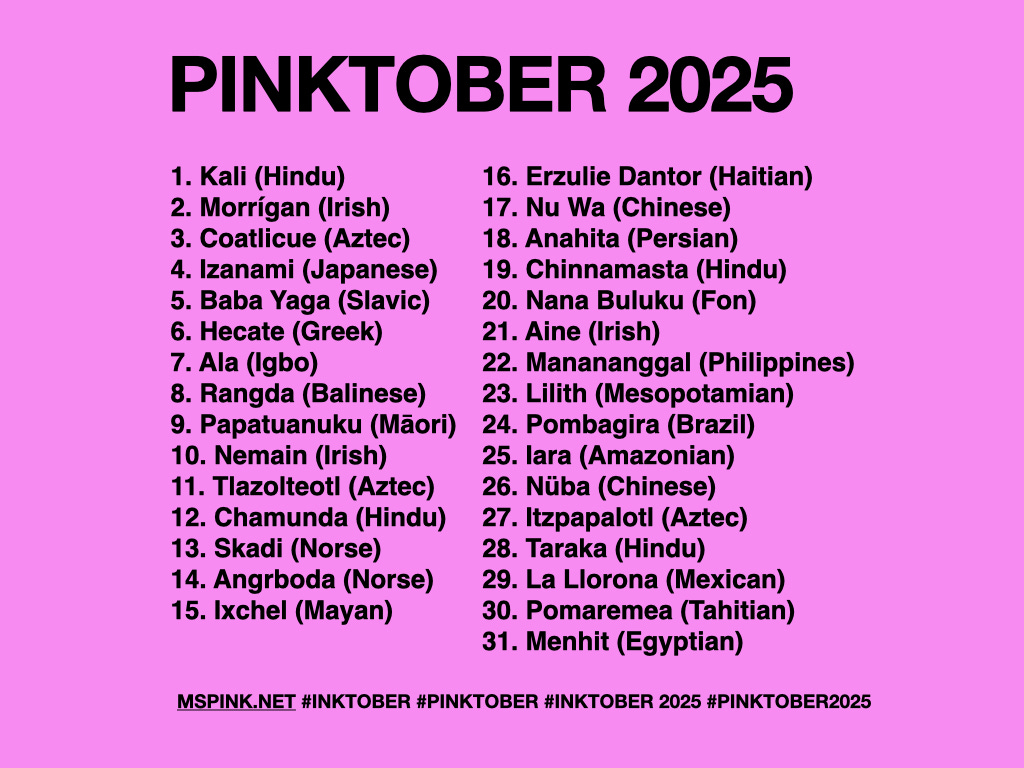Pinktober 2025: Week 2
The first full week of my October drawing challenge!
Just like last year, I’m genuinely amazed at how the Inktober/Pinktober challenge motivates me to find time to draw every day. I also feel like my mastery of the Tombow water-based ink pens is improving little by little with each drawing. Although I’m constantly finding myself wishing for more colors… This hobby is voracious.
This past week has been busier than most, and since I’m still between contracts that means several hours of every day is spent applying for jobs. These days, it’s a game of numbers—or maybe a war of attrition—that shares more in common with doom-scrolling or playing the slot machines than traditional self-promotion.
Hitting up half a dozen job search sites every day, entering endless combinations of search terms and job titles, researching companies and trying to identify hiring managers, applying to every posting that seems to even vaguely match my experience, and finding new and exciting ways to use ChatGPT as my personal recruiter, career coach, and tireless source of moral support and inspiration, remixed and upcycled from the hive mind.
In addition to applying for and interviewing for jobs like a madwoman, I’ve been practicing for this weekend’s performances in the Dreadful Delights show. Last night was amazing, and tonight’s will be even better… Tickets are still available if you’re in Vancouver!
Alrighty then… let’s talk about badass goddesses! Here’s this week’s roundup…
Day 4: Izanami, the Japanese Queen of the Dead
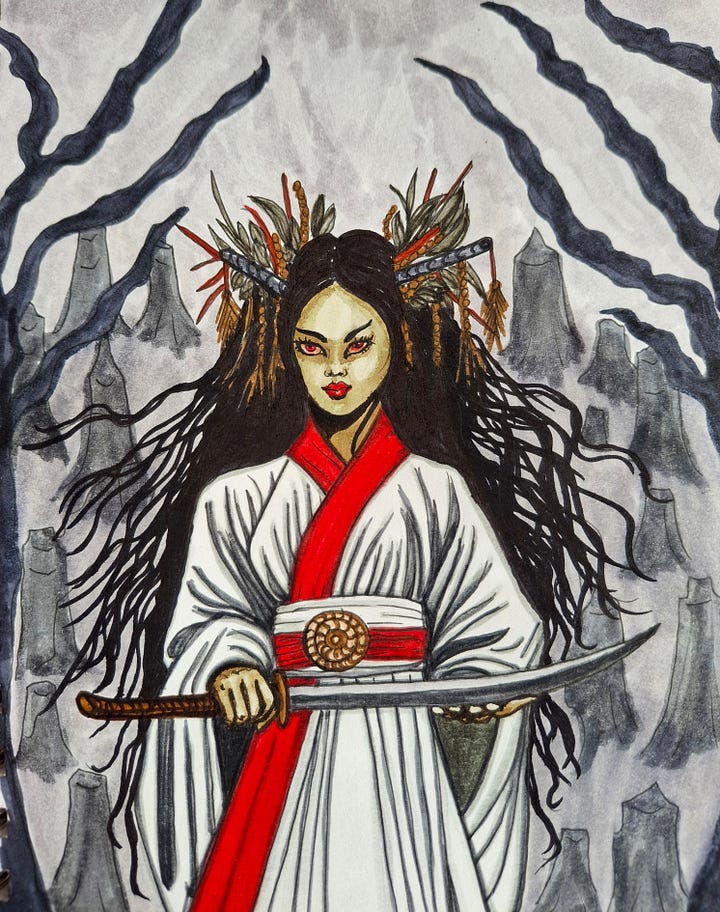
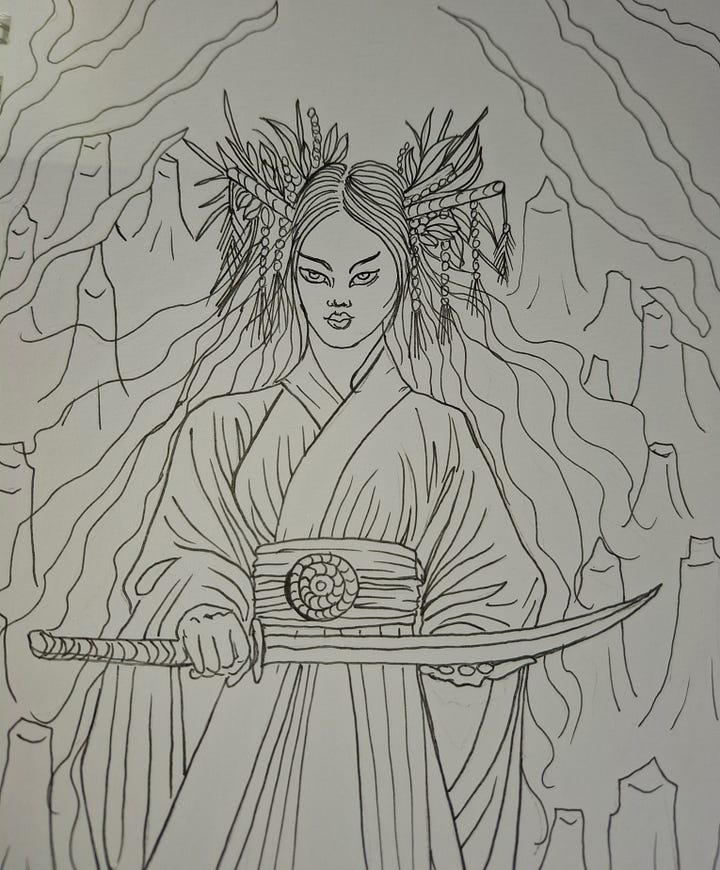
Izanami is a primordial Shinto creator and mother goddess. After dying in childbirth, she became the goddess of the land of the dead and ruler of Yomi, Japan’s underworld.
She and her brother/husband Izanagi created the Japanese archipelago and many other deities in the pantheon, but tragedy struck when she died after giving birth to the fire deity Kagutsuchi.
Her grief-stricken husband travelled to the underworld to retrieve her, but she had eaten from the food of the land of the dead, and her body began to rot. She transformed into the embodiment of death and became the underworld’s ruler.
After her transformation, Izanami vowed to kill 1,000 people every day. In response, Izanagi declared he would create 1,500 new lives each day, thus ending their union.
Day 5: Baba Yaga, the Slavic Forest Witch

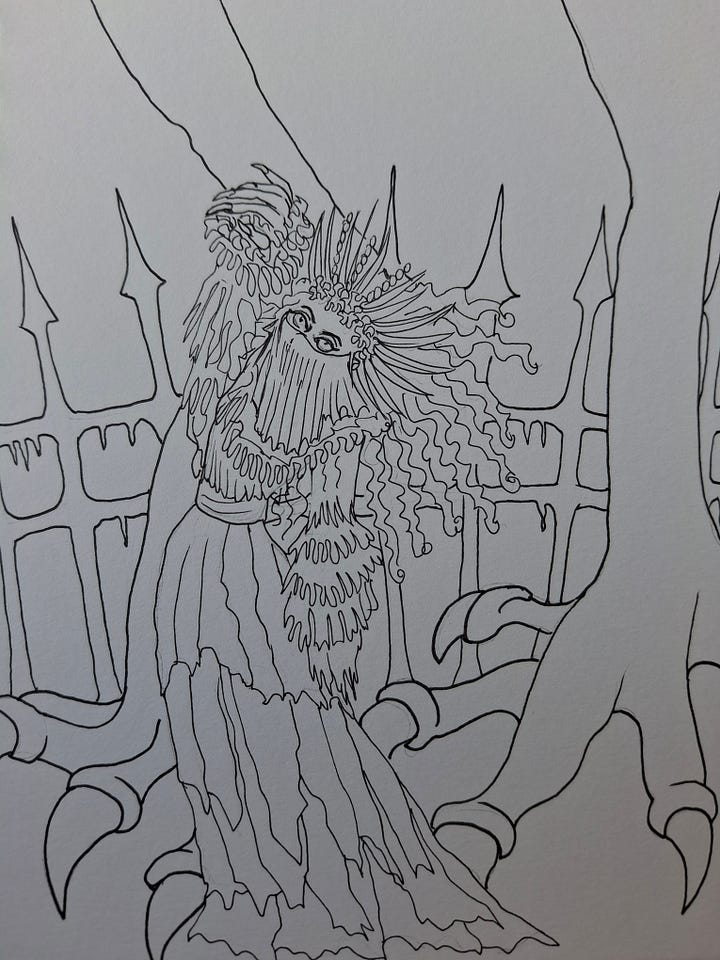
Baba Yaga is a powerful Slavic folk deity, often depicted as a fierce, ugly, old woman with a house on chicken legs. She frequently appears as a terrifying child-eating witch in folk tales, but she also functions as a wise elder who tests heroes, sometimes providing them with aid and advice.
Whether depicted as a cannibalistic witch, like in the Hansel and Gretel fairy tale, or as a wise old woman offering guidance when the traveling hero needs it most, Baba Yaga serves as a gatekeeper at the boundary between the living world and the land of the dead.
Her ambiguous nature bridges symbolizes the untamed aspects of nature and the challenges of growth and transformation. She possesses immense power over the elements as well as wild and domesticated animals.
Day 6: Hecate, the Greek Goddess of Magic
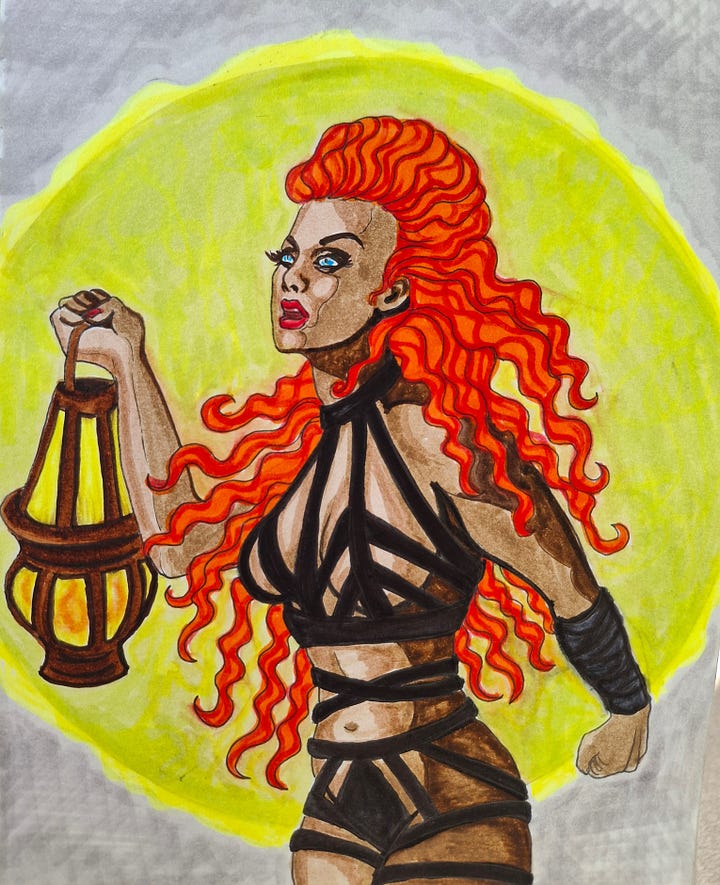
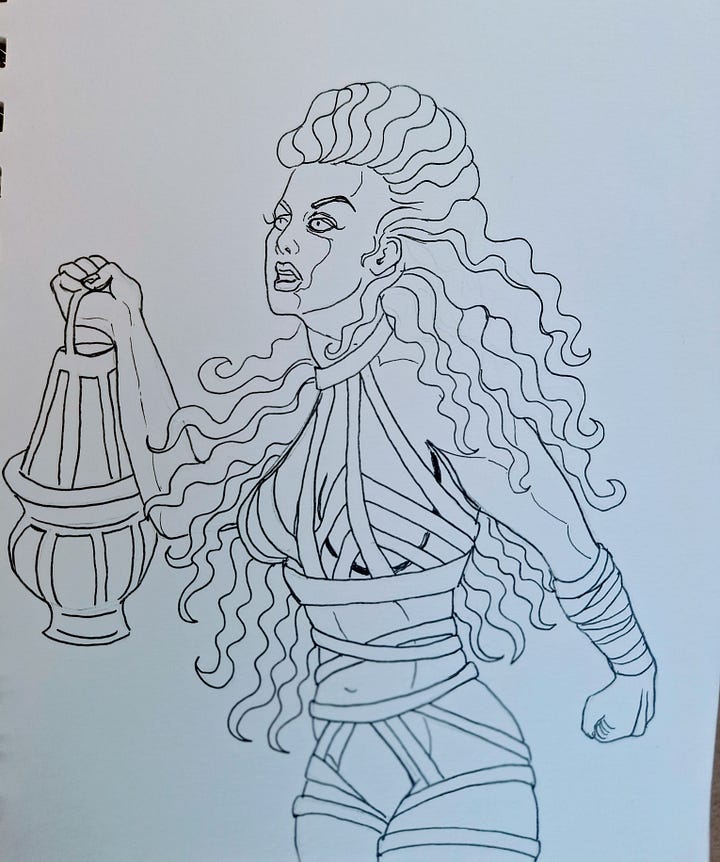
Hecate is the Greek goddess of magic, witchcraft, crossroads, and the moon, whose totems are a torch and key. She is a powerful deity, capable of both good and evil, and a loyal ally of the Olympian gods who granted her broad influence over Earth, the sky, and the underworld.
Her ability to traverse different realms and her association with transformation, choices, and hidden knowledge make her a unique and formidable goddess. She often assists the other gods when they need to travel between Mount Olympus, the realm of the gods, and the Underworld, which is ruled by Hades.
My drawing of Hecate was inspired by the real life badass goddess Melody Mangler, the creator and choreographer of Dreadful Delights among many other Vancouver shows. She is an eternal source of inspiration for me, for her imagination, energy, entrepreneurship and shear superhuman endurance. She’s the busiest businesswoman I know, and a peerless powerhouse of creativity.
Day 7: Ala, the Igbo Nature Goddess
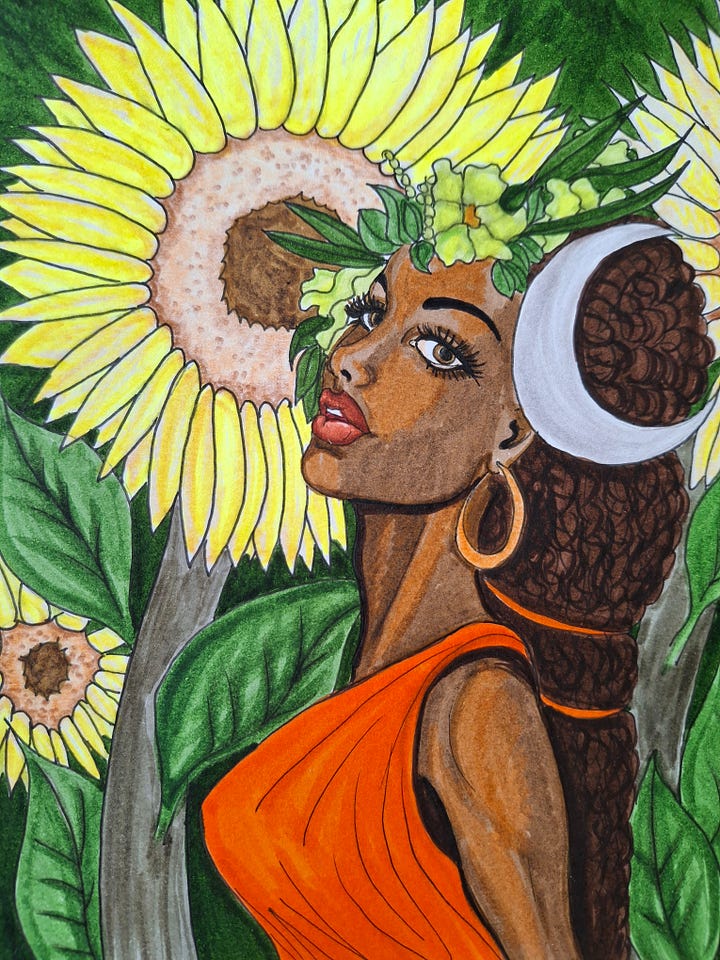
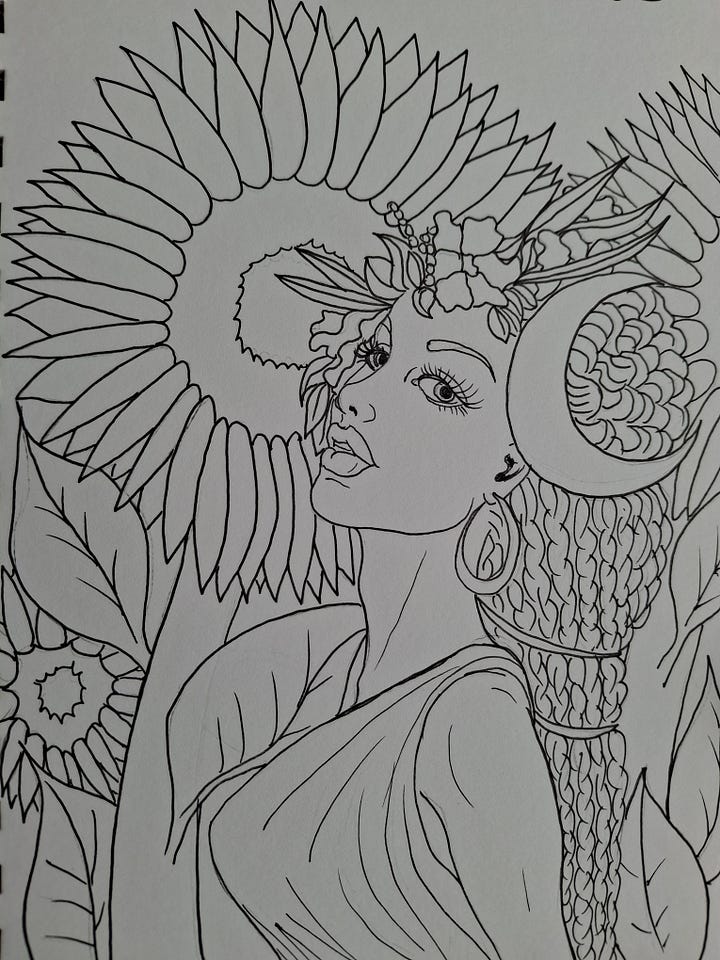
Ala is the Igbo goddess of the Earth, fertility, and morality. She’s the highest deity in the Igbo pantheon, considered the mother of humanity and of the earth itself, as well as the judge of human actions and laws.
Her sacred messenger on earth is the python, and violations against her laws are considered abominations that disrupt the harmonic order and require appeasement.
Ala is also the queen of the underworld, holding the souls of the deceased within her womb until their eventual return to the earth.
Day 8: Rangda, the Balinese Demon Queen
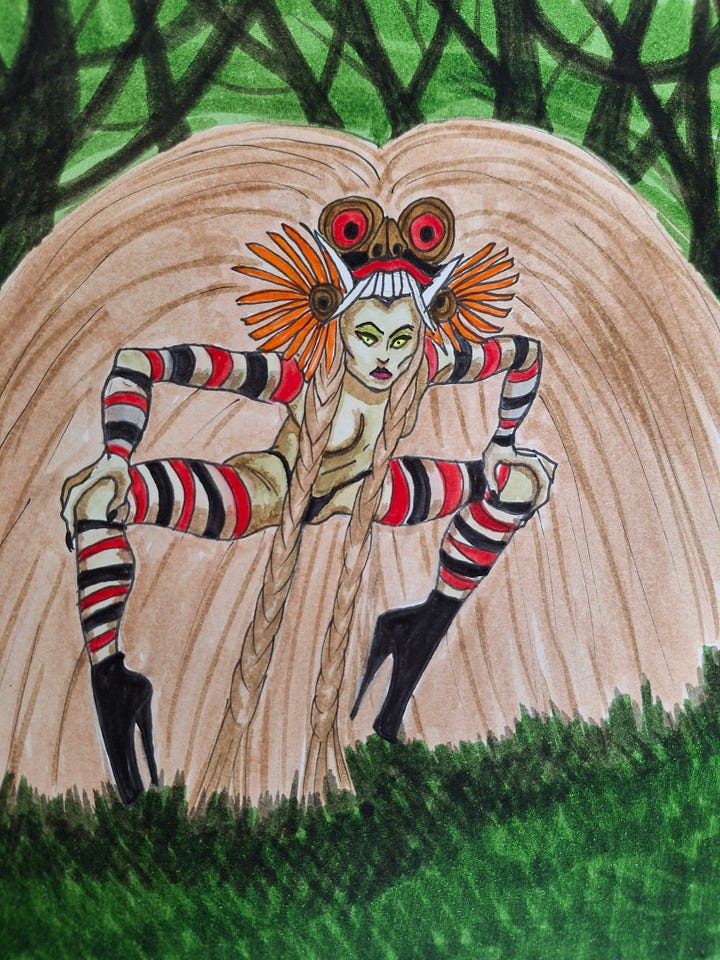
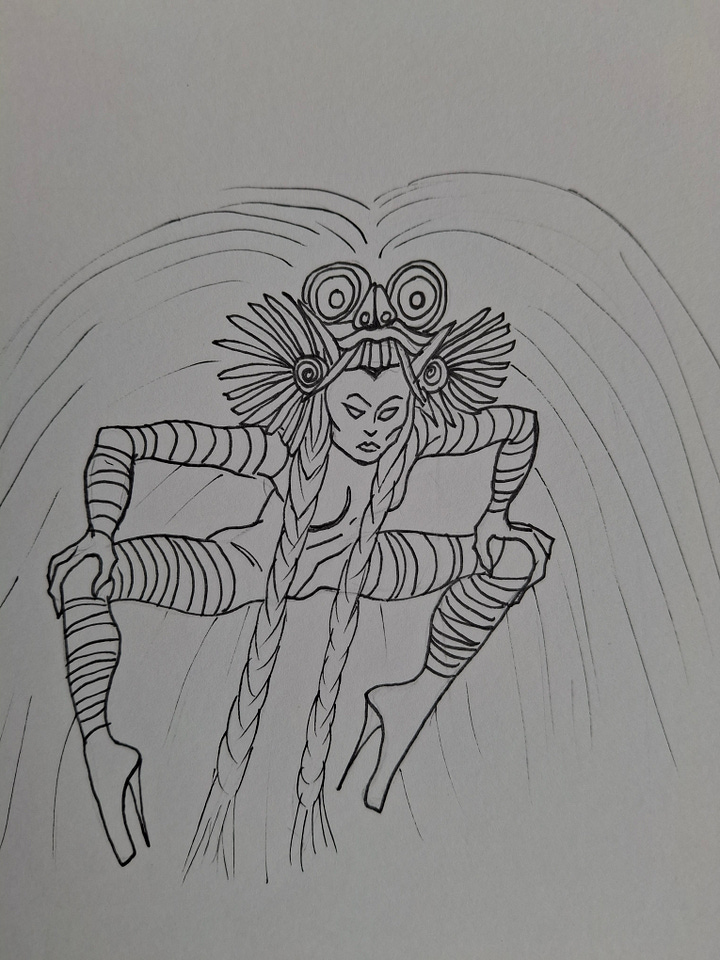
Rangda is a terrifying, child-eating demon queen in Balinese mythology, leading an army of evil witches against Barong, the king of good spirits. She is often depicted as the fearsome embodiment of the Goddess Durga, a Hindu deity closely associated with destruction and power.
The confrontation between Rangda and Barong is vividly depicted in traditional Balinese dances, which symbolize the eternal struggle between good and evil in the world. The mask she wears reflects her demonic nature, featuring large, protruding eyes that radiate wanton anger and cruelty.
While Rangda is a formidable demon, she’s also seen as a necessary force for maintaining balance. Her presence helps to keep evil at bay, ensuring that darkness never fully prevails.
Day 9: Papatūānuku, Māori goddess and Earth Mother
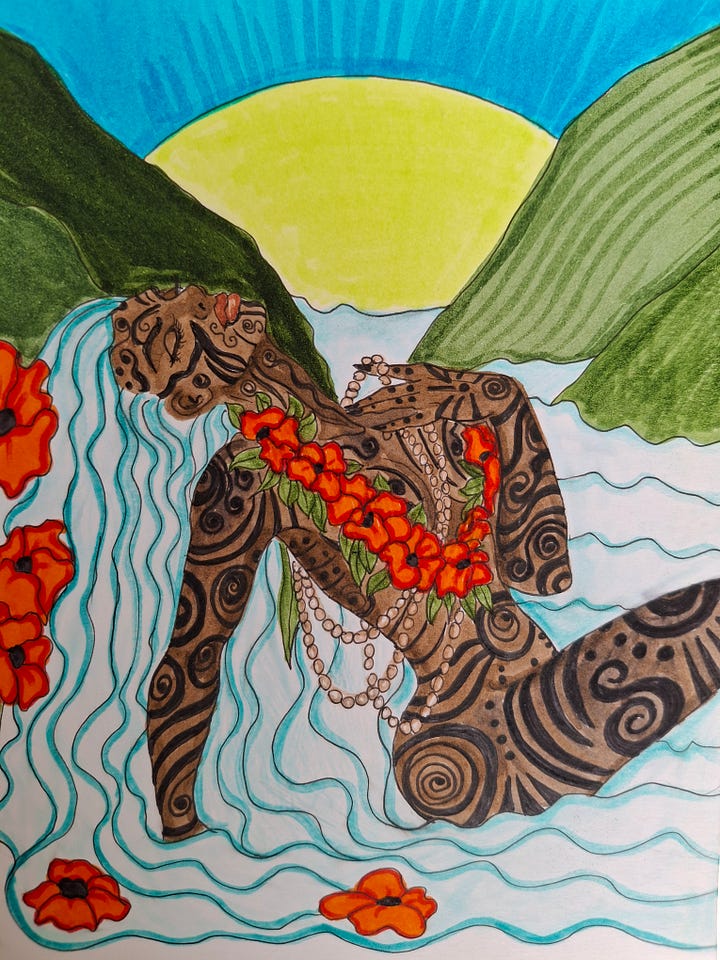
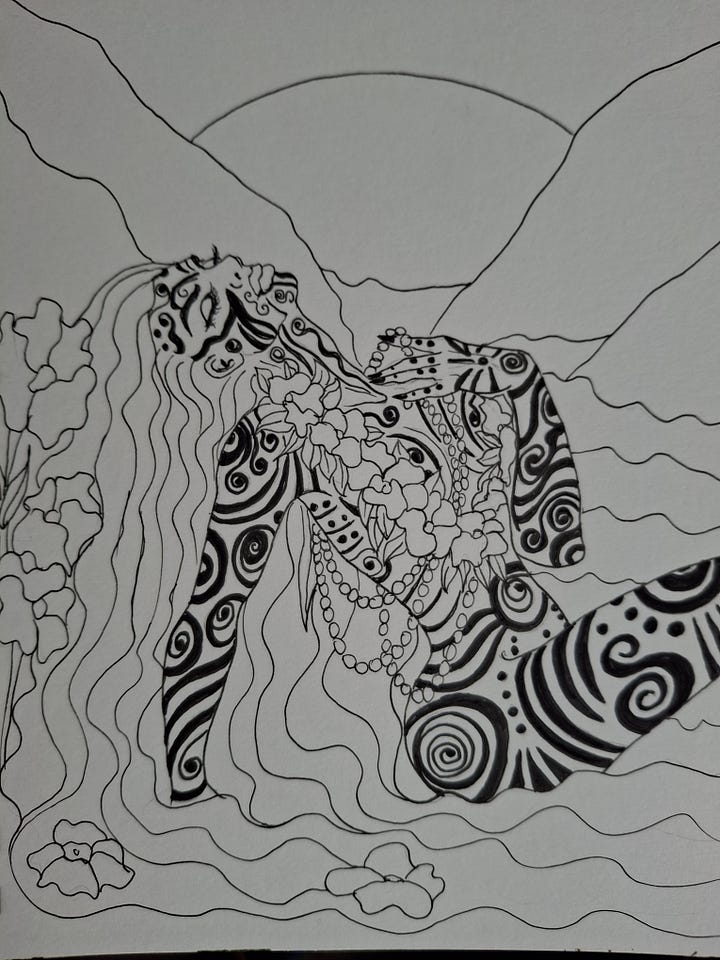
Papatūānuku is the Māori goddess who gave birth to all life on earth, with the land itself being a manifestation of her body. She is revered as a powerful matriarch, and the connection between Papatūānuku and her people is deeply spiritual.
She was married to Ranginui, the Sky Father, in a tight embrace that kept their children in darkness. Their children, a race of gods called the atua, forced their parents apart to create the universe and allow light to enter the world.
Papatūānuku is a symbol of fertility and the bounty of nature she bestows upon her children. She is seen as the sustainer of all life, and harming the earth is considered an attack on her, potentially invoking the wrath of her husband and sons.
Day 10: Nemain, the Irish War Goddess
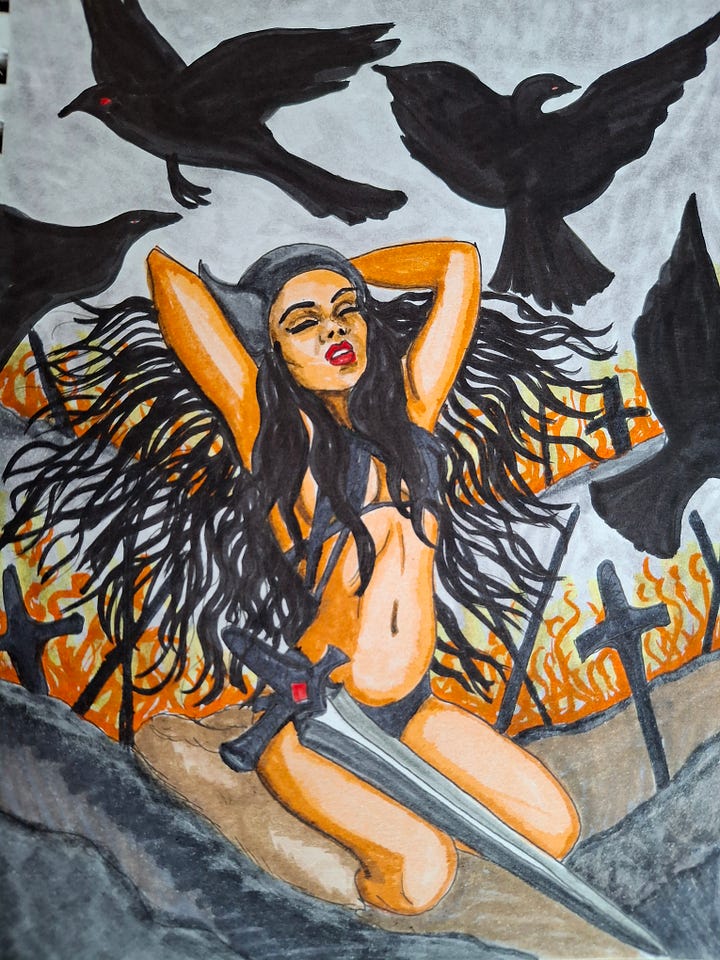
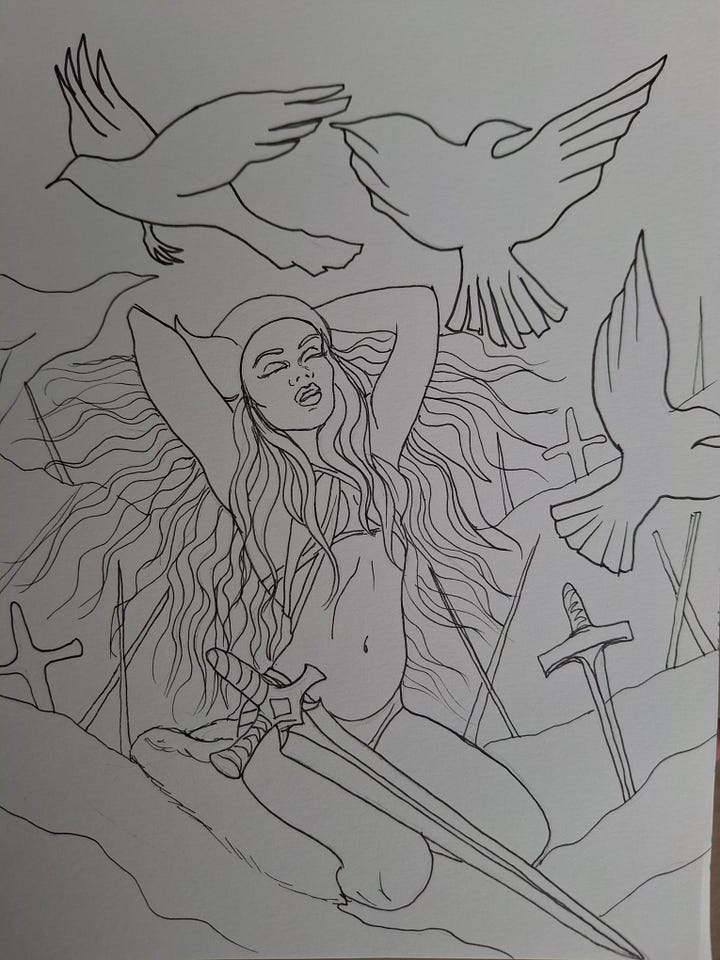
Nemain is a Celtic war goddess associated with the maddening frenzy and havoc of battle, and she is one of the three entities that make up the Morrígan, along with he4r sisters Badb and Macha.
Nemain embodies the chaotic and destructive aspects of warfare, causing terror and confusion. Her name means “frenzy” or “fury” and the very sight of her on the battlefield is said to cause soldiers to die of fright.
Inktober/Pinktober continues
I’m posting new drawings on Instagram every day at MsPinkDotNet. If you’re taking up the challenge, please use the hashtags below and feel free to tag me. I’d love to see your work!
#Inktober
#Pinktober
#Inktober2025
#Pinktober2025


